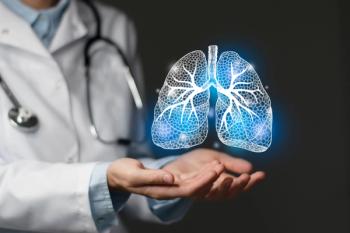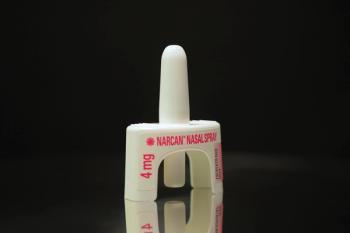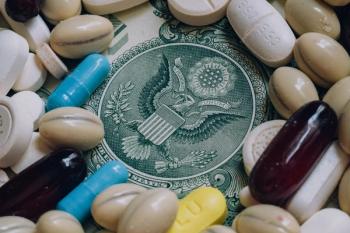In a scoping review detailing the promotional side of vaccine services at community pharmacies, researchers found that pharmacies struggle to define certain vulnerable groups, leading to a skewed approach of targeting vulnerable communities for promotional vaccine materials over others. Suggesting a collaboration between public health officials and pharmacy representatives, the authors encouraged community pharmacies to expand their knowledge of vulnerable communities and better understand the nuances of providing care to specific social groups.
“Evidence on the characteristics of patients vaccinated in pharmacy settings suggests that pharmacies vaccinate a more privileged population during influenza mass campaigns. Pharmacies tend to vaccinate individuals with a higher income, higher education, and younger populations,” wrote authors of the study published in BMC Public Health.1
Key Takeaways
- Researchers aimed to address how community pharmacies target vulnerable groups regarding the promotion of vaccinations.
- They found that individuals experiencing lifecycle vulnerabilities—regarding age and pregnancy—and clinical vulnerabilities were the 2 most targeted groups to receive vaccination promotions.
- The findings detail a need for community pharmacies to strive for a better definition and understanding of specifically vulnerable population groups.
Children from low-income households are 30% less likely to receive the 7 recommended vaccines in infancy: measle-mumps-rubella, diphtheria-pertussis-tetanus, and polio. With specific populations suffering from various diseases—like increased hospitalization rates for influenza amongst Black, Indigenous, and Hispanic individuals compared with White individuals—it’s more important than ever for pharmacists to represent the front line of immunization and use their knowledge to combat vaccine hesitancy across the country.
READ MORE: Community Pharmacist Education to Combat Vaccine Hesitancy
Other studies have explored the interventions used to increase vaccination rates, showing significant evidence that supports various modes of communication with patients to increase immunization. They also highlighted the importance of stratifying patients across various groups of vulnerability. “Groups were vulnerable based on socioeconomic status, minority ethnicity, migrant/refugee status, age, location, or LGBTQ identity,” wrote authors of another study published in BMC Public Health.2 However, many studies have not focused on the role of community pharmacists specifically to promote immunization among the patients they serve in their communities.
“In recent years, vaccination in community pharmacies is gaining momentum and may present a solution to reduce vaccine disparity. Pharmacists are recognized as accessible, convenient, trustworthy, and cost-effective vaccine providers. Studies from various jurisdictions show that allowing pharmacists to vaccinate increases uptake,” they continued.1
With community pharmacies offering more immunization services than ever before, researchers wanted to understand the strategies used to promote their services and ultimately provide care for the largest groups of people possible. But similar to other areas of health care and beyond, there are usually groups of individuals left behind due to systemic flaws, and vaccinations are not much different.
Before exploring the immunization services within community pharmacies, researchers separated social vulnerabilities into 5 different types: Lifecycle (mainly related to age), clinical, socioeconomic, geographical, and “other,” for types of social detriments not falling into the first 4 categories.1
The scoping review included a total of 1039 articles with just 63 meeting inclusion criteria. Among the included literature, 86% of articles originated in North America and 46% addressed the influenza vaccine, followed by pneumococcal (22%), herpes zoster (22%), and human papilloma virus vaccinations (22%).
“Lifecycle vulnerabilities (76%) such as age and pregnancy were most often used to target vulnerable patients followed by clinical factors (29%), socio-economical determinants (25%), and geographical vulnerabilities (11%),” wrote the authors. Furthermore, the most commonly used strategy for promoting immunization services in each pharmacy was a simple, 4-step approach of strongly recommending the respective vaccine to patients, displaying promotional posters in the pharmacy, handing out leaflets with more information, and providing vaccination training for staff.1
“Our scoping review highlights the use [of] lifecycle and clinical dimensions to define vulnerability and to target patients identified as vulnerable, at the expense of narrowing down the definition of vulnerability and its process. Social determinants of health such as one’s race, income, and geographical situation are important contributors of vaccine inequality,” continued the authors.
Diving deeper into the lifecycle vulnerability, researchers were sure to mention pregnancy, a population of individuals also receiving constant primary care to ensure the safe delivery of their child. With lifecycle and clinically vulnerable individuals being targeted the most, it may be reinforced by these 2 populations’ apparent need for consistent clinical services. However, these findings significantly underscore the fact that underserved communities experiencing racial, economic, or geographical complications are in greater need of the proper promotional targets to boost vaccination rates.
“Social determinants of health such as one’s race, income, and geographical situation are important contributors of vaccine inequality. Indeed, some marginalized groups are absent from the vaccine promotion literature in pharmacy such as intravenous drug users, the LGBTQ community, and homeless people…Improving stagnating vaccination rates requires a collaborative effort from all pharmacy employees as well as a continuous reflection exercise on the efforts made to attract underserved communities. Pharmacists can play an even greater role in vaccination through leveraging their position as accessible, competent, and trustworthy health professionals,” concluded the authors.1
READ MORE: Immunization Resource Center
References
1. Chadi A, Thirion DJG, David PM. Vaccine promotion strategies in community pharmacy addressing vulnerable populations: a scoping review. BMC Public Health. 2023;23(1):1855. Published 2023 Sep 23. doi:10.1186/s12889-023-16601-y
2. Norman, G., Kletter, M. & Dumville, J. Interventions to increase vaccination in vulnerable groups: rapid overview of reviews. BMC Public Health 24, 1479 (2024). https://doi.org/10.1186/s12889-024-18713-5






















































































































































